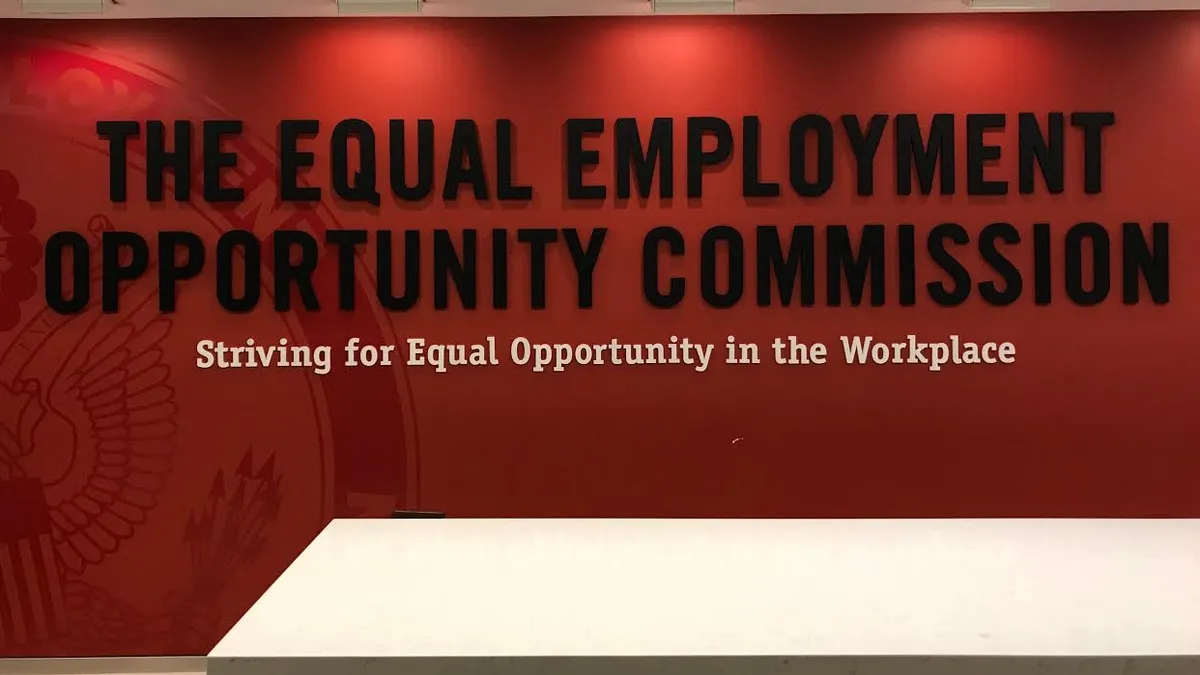WASHINGTON — Officials agreed during a public hearing of the U.S. Equal Employment Opportunity Commission (EEOC) Nov. 20 that pay equity is important despite a clear disconnect over how to make it a reality.
"Well, it's déjà vu all over again," EEOC Commissioner Victoria A. Lipnic said, kicking off the hearing. Lipnic was with the agency when it first decided to add a pay data collection component to its annual EEO-1 forms in 2016, a decision that stirred opposition from the nation's employers and their advocates. "This has been quite the ongoing experience."
Sept. 30 marked the deadline for EEOC's first-ever pay data collection for the 2017 and 2018 fiscal years, which non-exempt employers were directed to file as an add-on to their annual EEO-1 reports, called "Component 2." Not even two months after the deadline of that first collection, and with about 82.4% of eligible employers having completed submission of Component 2 — per EEOC's latest status update to a federal court on Nov. 1 — the future of the agency's pay data collection is already being called into question.
Witnesses representing employers at the hearing all honed in on one central issue: the burden to gather the data and report it in compliance with EEOC's guidelines.
"There are many hours involved in completing the EEO-1 report, and we believe the commission has understated that burden," Michael Eastman, senior vice president, policy and assistant general counsel at the Center for Workplace Compliance, said at the hearing. He added that the agency should have followed the recommendations of the National Academy of Sciences (NAS), which produced a report on pay data collection in 2012.
In the report, per Eastman, NAS recommended that EEOC prepare a comprehensive plan outlining the use of data it would collect prior to initiating collection, gather data on pay rates rather than "actual earnings or pay bands," and conduct a pilot study, among other items. The EEOC did not accomplish the first two items, Eastman said, and he argued that the agency's pilot study was conducted before the development of a comprehensive plan.
Witnesses also took issue with EEOC's calculations estimating the burden that Component 2 would place on employers. Lynn Clements, director, regulatory affairs at consulting firm Berkshire Associates, said Component 2 requires employers to "manually reconcile various data points" to report their pay data, which "increases the burden while simultaneously decreasing the usefulness of the data."
Though her firm helped employers file their reports, Clements said employers spent hundreds of hours compiling that data before sending it to Berkshire Associates. "Had they not used our services, they would have had to create that data upload themselves," she said. "There are a lot of costs that are beyond the cost of what you would pay a vendor."
Others said they aren't convinced the burden is quite that extensive. Donald Tomaskovic-Devey, director of the Center for Employment Equity at the University of Massachusetts, Amherst, told HR Dive in an interview Wednesday that claims like Clements' "don't square up." While there would be some "significant cost adjustments" in the initial year of reporting, large HR software vendors used by many employers can accommodate the reporting involved, Tomaskovic-Devey said. He added that smaller firms lack some of the IT support others have and would likely face a heavier reporting burden.
Another sticking point is the information Component 2 requires: hours worked and W-2 compensation data. Joshua Mitchell, senior economist at Welch Consulting, said during the hearing that EEOC's use of pay bands would not yield similar results to those produced by a formal pay equity analysis. Among other issues, the data ignores employment changes that affect compensation, and EEO job categories are too broad and are unlikely to properly group workers together, Mitchell said.
But others say there are benefits to collecting pay band data. Betsey Stevenson, professor of economics and policy at the University of Michigan, told commissioners these data align with how HR managers typically look at compensation (a point also made in the National Academy of Sciences report) and can preserve anonymity in the event the information is made public.
There's also the question of employers' commitment to improving government data collection. Tomaskovic-Devey said it's the job of consultants and employer advocates to keep the EEOC as far away as possible: "If the issues that the employers have with utility were sincere, they probably should have proposed an alternative data collection."
It's the lack of an alternative that served as a sticking point for some witnesses. The push to drop future use of Component 2 "is misguided and ill-advised, will undermine robust enforcement, ignores the pressing need to expand efforts to uncover persistent pay disparities, and represents a significant, unwarranted step backwards in the fight for equal pay," Jocelyn Frye, senior fellow at the Center for American Progress, told EEOC.
Commissioner Charlotte Burrows and Lipnic both noted the elevated and public discussion around pay equity and discrimination taking place in recent years. And Burrows said a lack of information hurts EEOC's enforcement efforts. "We often discover pay violations accidentally — while investigating another claim, or when an employee stumbles upon evidence of unequal pay," she said in a closing statement.
But there remain issues to work out in the meantime. "We must balance collection with burden," Stevenson said. Even the first collection of Component 2 isn't yet complete, several witnesses observed, meaning the agency still has to decide what it will do with the data once its collection is finished.
The future of pay data reporting beyond the current Component 2 collection appeared a bit cloudy, given EEOC's decision not to renew that effort. But that forecast changed slightly due to an announcement ahead of Wednesday's hearing that EEOC man pursue pay data reporting requirements via rulemaking as soon as September 2020.





















